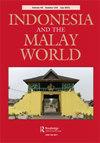印尼努穆罕默迪耶再访
IF 0.9
3区 社会学
0 ASIAN STUDIES
引用次数: 3
摘要
摘要先前对印度尼西亚的实证研究支持了穆罕默迪亚改革运动导致当地文化衰落的说法。改革派运动的普遍呼声是穆斯林应该回归原始的伊斯兰教。然而,关于改革派穆斯林如何适应当地文化的研究却很少。在我采用民族志方法进行的实地研究中,我发现比马穆罕默德的改良派支持被视为符合当地智慧的当地仪式(kearifan lokal)。例如,改革派穆斯林积极参加先知诞辰Mawlid的庆祝活动,这是一种通常与Nahdlatul Ulama(NU)传统主义者有关的仪式。历史记录显示,这两种不同的宗教取向在比马苏丹国内根深蒂固。由苏丹和Raja Bicara(苏丹发言人)组成的Bima二元领导层允许在Bima建立NU和Muhammadiyah的分支机构。这反过来又将政治稳定作为促进该地区宗教和谐的动力。正如研究结果所表明的那样,传统派和改革派相互适应是很重要的。因此,Mawlid仪式并没有消失,因为它被认为是比马穆斯林身份标志的基础,对NU和Muhammadiyah的追随者来说都是如此。本文章由计算机程序翻译,如有差异,请以英文原文为准。
Revisiting Nu-Muhammadiyah in Indonesia
ABSTRACT Previous empirical studies on Indonesia have supported the claim that the reformist movement of Muhammadiyah led to a decline in local culture. The popular call of the the reformist movements is that Muslims should return to a pristine Islam. However, little has been studied about how reformist Muslims accommodated local culture. In my field research employing ethnographic methodology, I found that the reformists of Muhammadiyah in Bima support local rituals seen as complying with local wisdom (kearifan lokal). For example, the reformist Muslims actively participated in the celebration of Mawlid, the Prophet’s birthday, a ritual commonly associated with the traditionalists of Nahdlatul Ulama (NU). Historical records show that the two differing religious orientations have been anchored within the Bima sultanate. Bima’s dyadic leadership, comprising the Sultan and the Raja Bicara (sultan’s spokesperson), allowed for branches of both NU and Muhammadiyah to be established in Bima. This in turn places political stability as an impetus for religious harmony in the region. As the findings show, it is important for both traditionalist and reformist strands to accommodate each other. Accordingly, the Mawlid ritual has not disappeared as it is considered fundamental to the identity marker of Bima Muslims, for both NU and Muhammadiyah followers.
求助全文
通过发布文献求助,成功后即可免费获取论文全文。
去求助
来源期刊

Indonesia and the Malay World
ASIAN STUDIES-
CiteScore
2.00
自引率
0.00%
发文量
17
期刊介绍:
Indonesia and the Malay World is a peer-reviewed journal that is committed to the publication of scholarship in the arts and humanities on maritime Southeast Asia. It particularly focuses on the study of the languages, literatures, art, archaeology, history, religion, anthropology, performing arts, cinema and tourism of the region. In addition to welcoming individual articles, it also publishes special issues focusing on a particular theme or region. The journal is published three times a year, in March, July, and November.
 求助内容:
求助内容: 应助结果提醒方式:
应助结果提醒方式:


